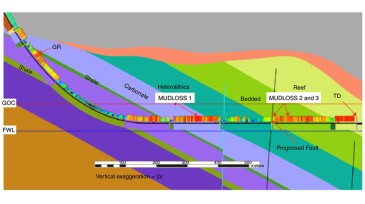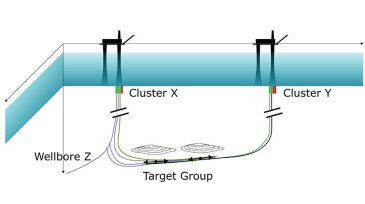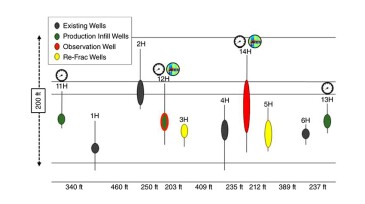well spacing
-
This paper describes an auto-adaptive workflow that leverages a complex interplay between machine learning, physics of fluid flow, and a gradient-free algorithm to enhance the solution of well-placement problems.
-
This paper addresses the difficulty in adjusting late-stage production in waterflooded reservoirs and proposes an integrated well-network-design mode for CO₂ enhanced oil recovery and storage.
-
This paper introduces a system that leverages sophisticated algorithms and user-friendly interfaces to tackle the challenge of developing complex, compartmentalized reservoirs effectively.
-
This paper discusses cases from the North Sea and offshore California in which high-fidelity pressure and dynamics measurements, combined with high-speed telemetry, helped overcome complex geotechnical challenges.
-
This paper presents an efficient mathematical optimization method for well placement that maximizes contact with the productive zones for the best locations in the reservoir.
-
This work proposes a method to interpret far-field strain-change and pressure data to quantify fracture connectivity and properties at the cluster level.
-
his paper investigates the challenges faced in the development of mature and tight fields, primarily resulting from reservoir depletion, high operational costs, and uncertainty in reserves volumetric calculations.
-
This paper proposes a method to radically revise the well-path-generation process to reach the vision of planning a well in one day with high quality, relying on the collection of experience-based constraints from each discipline to generate possible alternatives.
-
This paper assesses the potential of augmented depletion development in four US plays: Bakken, Eagle Ford, Midland, and the Anadarko Basin.
-
This paper’s focus is a case study of an Eagle Ford refracturing project in which a range of completion designs were trialed with an approach using offset sealed wellbore pressure monitoring and fiber-optic strain.
Page 1 of 4










